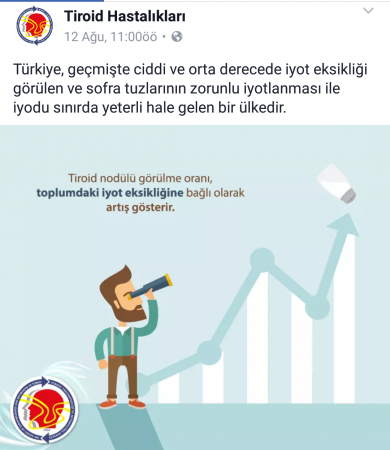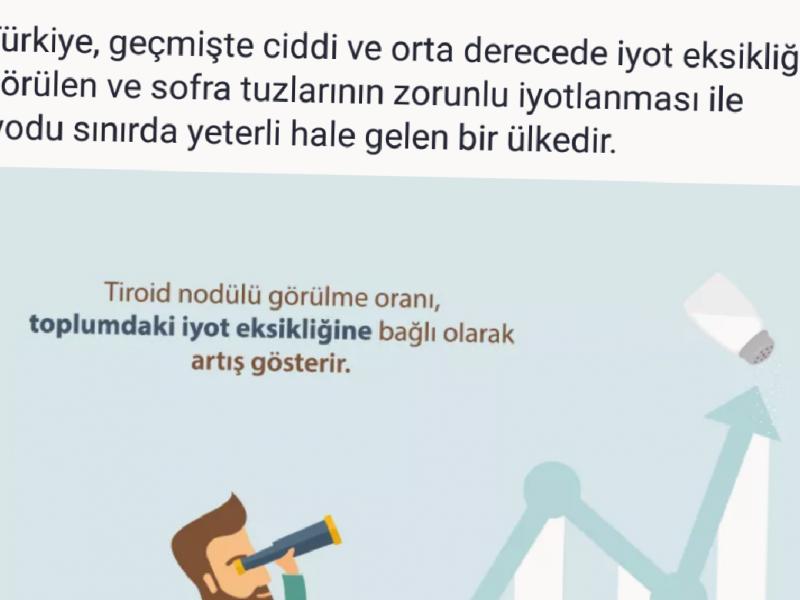
1. WHAT IS HYPOTHYROID AND WHAT ARE THE SYMPTOMS?
Hypothyroidism is a disease that occurs as a result of insufficiency or rarely ineffectiveness of thyroid hormone at the tissue level.
– Primary hypothyroidism: Due to causes of thyroid gland insufficiency
– Secondary hypothyroidism: Hypothyroidism due to TSH deficiency
– Tertiary hypothyroidism: Hypothyroidism due to TRH deficiency
Symptoms of hypothyroidism: weakness, fatigue, weight gain, forgetfulness, difficulty concentrating, dry skin, hair loss, chills, constipation, thickening of the voice, irregular and heavy menstrual bleeding, infertility, muscle stiffness, muscle pain, depression, dementia can be seen.
2. WHAT IS HYPERTHROID/THYROTOXICOSIS AND WHAT ARE THE SYMPTOMS?
Thyrotoxicosis: a general term that refers to an excess of thyroid hormones, regardless of the source.
Hyperthyroidism: It refers to the excess of thyroid hormone caused by the increase in hormone production from the thyroid gland.
Symptoms of hyperthyroidism: weakness, irritability, palpitations, weight loss, shortness of breath, heat intolerance, increased appetite, oligomenorrhea, sweating, diarrhea, eye symptoms.
3. WHAT IS THE TARGET FOR THYROID FUNCTION TESTS IN PREGNANCY AND WHEN SHOULD IT BE TREATED?
TEMD (Turkish Society of Endocrinology and Metabolism) recommendation
1st trimester: TSH should be between 0.1mIU/L-2.5mIU/L
2nd trimester: TSH 0.2mIU /L-3mIU/L
Third trimester: TSH should be between 0.3mIU/L-3mIU/L
The most important reason for hypothyroidism in pregnancy is autoimmune thyroid disease in iodine-sufficient regions. In areas with iodine deficiency, it is iodine deficiency.
4. HOW ARE THE THYROIDITS SEPARATED?
– Chronic autoimmune thyroiditis
-Painful thyroiditis
1. subacute granulomatous thyroiditis
2. infectious thyroiditis
3. radiation thyroiditis
4. thyroiditis due to trauma
-painless thyroiditis
1. subacute lymphocytic thyroiditis (silent thyroiditis)
2. postpartum thyroiditis
3. drug-induced thyroiditis (interferon, interleukin-6, amiodarone)
4. fibrous thyroiditis (Riedl struma)
5. WHAT IS HASHIMOTO THYROIDITIS AND WITH WHAT DISEASES?
Hashimoto’s thyroiditis is a disease of the thyroid gland with chronic autoimmune destructive inflammation. It is very common in all societies. It begins with enlargement of the thyroid gland, resulting in hypothyroidism. It is usually asymptomatic.
HASHIMOTO THYROIDITIS; Addison’s disease can be followed as a component of “type 2 autoimmune polyglandular syndrome” together with type 1 diabetes, hypogonadism, hypoparathyroidism, and pernicious anemia.
6. WHICH CONDITIONS CAN BE SUSPECTED FROM HASHIMOTO’S DISEASE?
1. Hypothyroidism not attributable to other causes
2. Anti-TPO or anti-Tg positivity without thyroid dysfunction/goiter
3. Cases with suspected thyroid lymphoma
4. Hypoechoic, heterogeneous appearance on ultrasonographic examination
7. WHAT ARE THE RISK FACTORS FOR THYROID DISEASE IN PREGNANCY?
1. Family or personal history of thyroid disease (hyperthyroidism or hypothyroidism, postpartum thyroiditis)
2. Previous thyroid surgery
3. Type 1 diabetes or other autoimmune presence of diseases
4. Presence of clinical findings suggestive of thyroid disease, goiter
5. Presence of previous thyroid autoantibodies
6. Anemia, high cholesterol, hyponatremia
7. Women who have received head and neck radiotherapy
8. Women who have received infertility treatment
9. Those who have a previous history of miscarriage or stillbirth
8. HOW TO APPROACH THYROID NODULES?
In the follow-up evaluation of thyroid nodules, calcitonin level should be measured once (for thyroid medullary cancer)
Thyroid USG: General population screening in nodules with suspicious sonographic features, insufficient material in recurrent biopsies, and long-term follow-up planned It is not a recommended test for Ultrasonographic examination should be performed in every patient with an abnormality in the thyroid gland during the examination. In addition, even if palpation is normal, ultrasonographic evaluation should be performed for every individual who has a risk of thyroid malignancy or who has lymphadenopathy in the neck.
In the thyroid USG report; The location, shape, size, borders, content, echogenic structure and blood supply characteristics of the nodules should be evaluated. Ultrasonographic findings that increase the possibility of malignant nodules are as follows: hypoechogenic structure, irregular borders, microcalcifications, etc.
9. WHICH THYROID NODULES SHOULD BIOPSY?
-Solid: hypoechoic if over 10mm, or patients in risk group over 5mm or with suspicious ultrasonographic findings
-Iso-hypoechoic: between 1-1.5cm
-Mixed or spongy: between 1.5-2 cm
-Pure cystic: biopsy is not required, if large, it should be drained.
-Multinodular: largest nodule and other ultrasonographically suspicious nodules

